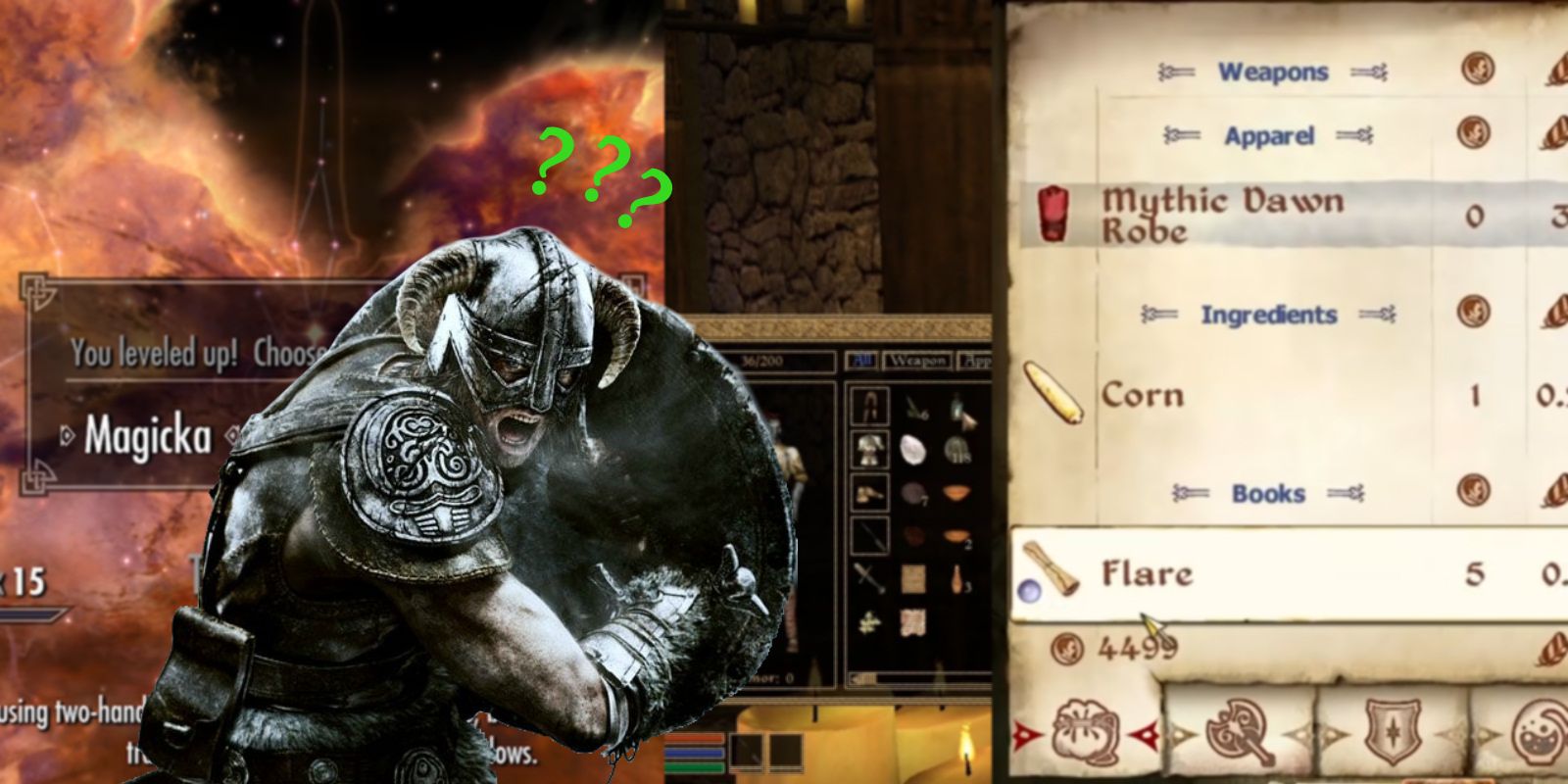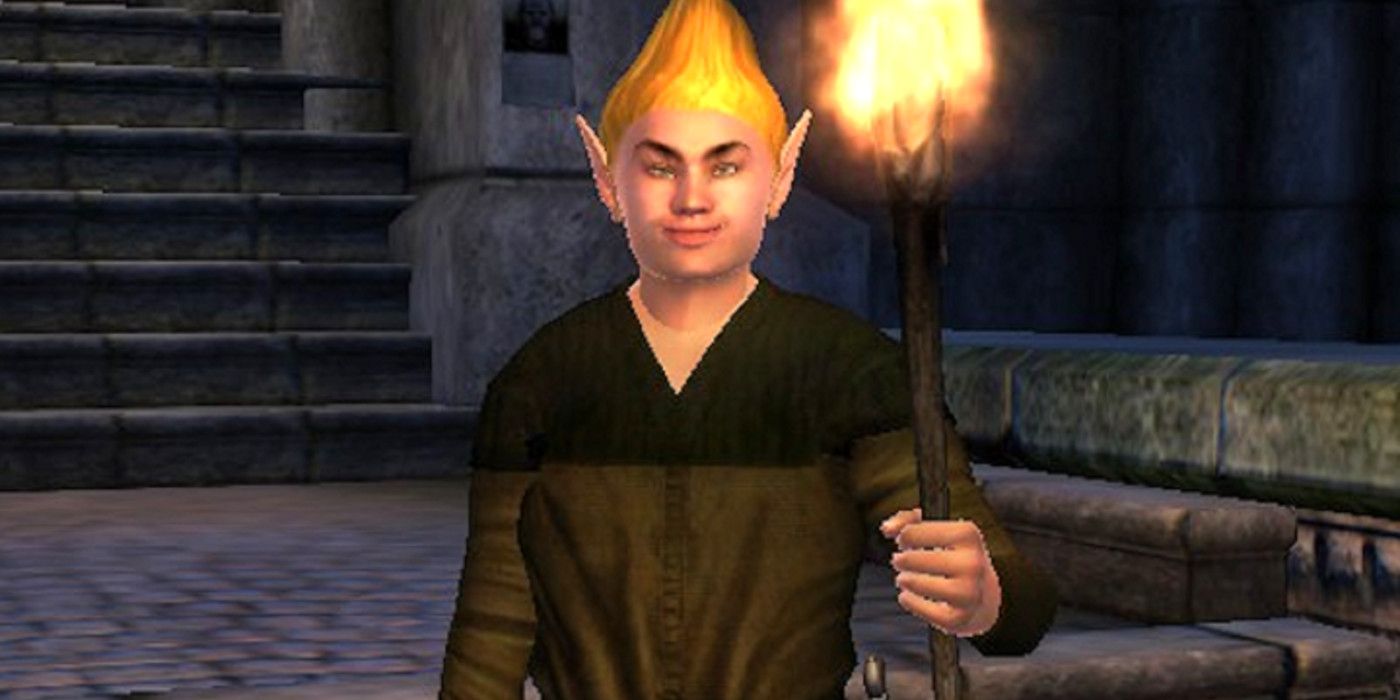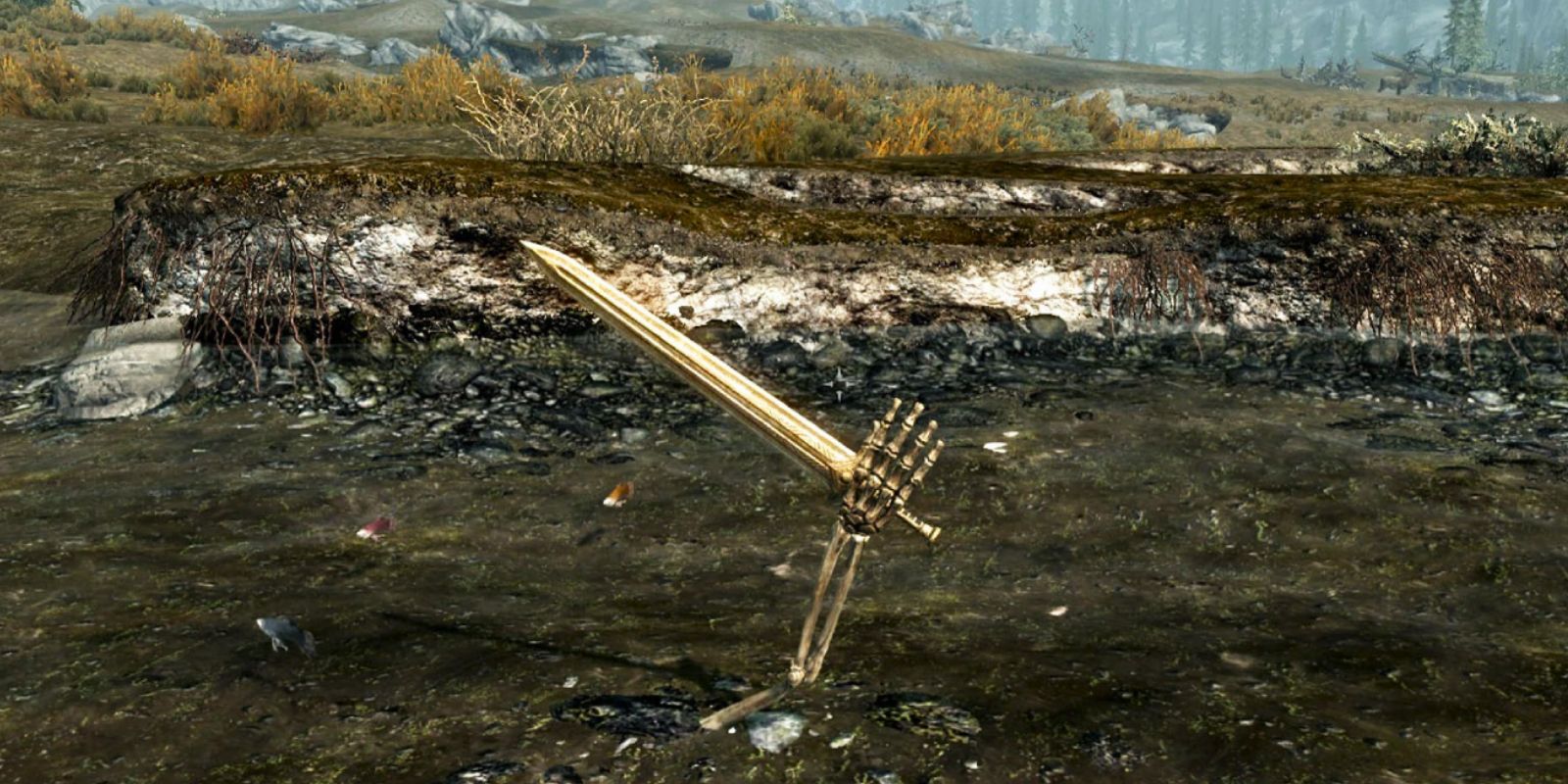The Elder Scrolls series has long been known for being fascinatingly complex, both in gameplay and lore, but more recent entries in the series, such as Skyrim and Oblivion, have embraced a streamlined simplicity that The Elder Scrolls 6 should forego. Each new release has been a significant entry into the RPG space, but with Daggerfall and Morrowind, the second and third games in the series, there was a certain feeling neither Oblivion or Skyrim, in their efforts to have more mainstream appeal, subsequently managed to capture about their mechanical essences.
The Elder Scrolls games are sandboxes, allowing players to live the fantasy life they choose, be that pursuing the main story or doing side quests, exploring, joining guilds, or purchasing and decorating Elder Scrolls housing. The Elder Scrolls II: Daggerfall featured a map roughly the size of Great Britain. If players were to walk from one end of the map to the other, it would take over sixty hours. There were around 750,000 NPCs throughout the world and 15,000 towns. Daggerfall managed to do this because most of the world and its people were procedurally generated. Technically, The Elder Scrolls: Arena (the franchise's very first entry) had a larger world because it was infinite, but patterns repeated more often, and the graphics sometimes struggled to keep up. The game could crash for players who wandered off too far from a major settlement.
The series was at its most complex with The Elder Scrolls III: Morrowind. When it was released in 2002, there was nothing quite like it. It’s true that the map was much smaller than Daggerfall at only around 10 square miles. However, all of it was handcrafted, including the dungeons and caves that dotted the landscape. It featured wonderfully complex and memorable characters, truly bizarre flora and fauna, and a complex custom spell system better than Skyrim's more stock affair.
The Amazing Complexity Of The Elder Scrolls 3: Morrowind
Open-world games were not new when Morrowind came out. After all, Grand Theft Auto 3 came out the previous year. What made Morrowind unique was that it allowed players to go anywhere, talk to everyone, and generally play the game how they wanted. If they so chose, players could make it their mission to kill every single NPC in the game, including main NPCs important to plot and gameplay.
It featured a magic system that allowed players to create their own spells and change how they function, including range, duration, magnitude, and area. Using the legitimate systems within the game, combining alchemy, enchanting, and spellmaking, players could devise ways to leap across the entire map in a single jump, and even survive the fall, unlike a certain unfortunate Wood Elf players encounter. Magic did not regenerate in Morrowind unless players rested or drank a potion, which made it a costly endeavor that required some planning and thought, but as seen above, spells could be very powerful.
Fast travel in Morrowind added to its immersion only worked between major settlements, so players were forced to walk many places. Enemies encountered in the wild were frequently very dangerous, especially the numerous and frustrating Cliff Racers, so exploration was often more difficult. The world seemed a lot larger than it was due to all these factors, but players also needed to explore it to progress. This could make progress tougher in Morrowind's unforgiving early hours, and players struggled in combat against even the most basic enemies. Wandering into an area where the player was not appropriately leveled meant certain death. This is unlike the more recent Elder Scrolls titles, which feature a more sweeping use of level scaling.
There were no quest or objective markers in Morrowind's map either. Instead, players received directions indicating where they should go. The directions were often imprecise, meaning that players could get lost, and possibly stumble across something new, like a Nord who had his clothes stolen. There were fascinatingly bizarre items too, such as the iconic Boots of Blinding Speed, which allowed players to move incredibly fast but also impaired their vision while doing so. Through clever use of the game's systems, players could even potentially find ways to negate the blinding aspect.
Though some of the dialogue within the game was voiced, most of the dialogue was done through text. This meant that conversations could have branching paths, with players speaking with NPCs on a wide range of topics and learning about the lore of the game and world through something other than just reading books.
How Oblivion & Skyrim Were Simplified
Unfortunately, subsequent entries in the Elder Scrolls series did away with some of the complexities of Morrowind. This isn’t to say The Elder Scrolls IV: Oblivion and The Elder Scrolls V: Skyrim aren't complex games. They are iterations on the formula, and there are many things that they do better, most notably graphics. NPCs were also improved, and Skyrim's characters and NPCs are better than Morrowind's, giving them both daily and weekly routines instead of constantly standing around.
Still, there is so much that was made simpler or just plain worse. The leveling system was streamlined in Oblivion to a degree, and even moreso in Skyrim, which did away with the games classes in favor of players being able to choose to improve any skill they wished. It had the unintended side effect of making the game way too easy and took away aspects of roleplaying. Play the game long enough, and players inevitably become a stealth archer because it is the most effective build.
Fast travel was changed, and it meant that players could, intentionally or not, explore less of the world despite Skyrim and Oblivion being larger than Morrowind. Characters were not as chatty either, since the games were fully voiced, where Morrowind got away with using more text. Spellcrafting was also gone, and some of the skills players could improve, such as jumping, were completely removed.
Even The Elder Scrolls Online is a simplified game compared to earlier titles, though this is due in part to the fact that it's an MMO. It’s difficult to have long convoluted questlines where the player’s decisions affect the world when there are thousands of people playing at once. There’s also balance to consider, as players becoming near-unstoppable isn’t healthy for the game’s economy, which instead focuses more on Elder Scrolls Online's deep armor and weapon customization.
How The Elder Scrolls 6 Can Grow More Complex Than Skyrim
Luckily, The Elder Scrolls 6 will likely be a single-player game, and its developers have the chance to allow the game’s character be overpowered, especially if they ramp up the difficulty. Bethesda, the developer of The Elder Scrolls series, have the benefit of years of experience with the setting. Not only can it make the story a more complex affair, it can give players new ways to live a life of fantasy adventure. It's a chance for added depth to the melee combat (which, to be fair to Oblivion, was significantly enhanced from its predecessor), for making magic a rewarding and customizable system with a dizzying array of spell effects, and possibly new schools beyond classic Elder Scrolls magic entirely. Armor could be more complex and customizable, with an increased number of equippable parts more akin to Morrowind, which allowed players to separately equip right and left pauldrons and gauntlets, and enchant them separately as well for an increased array of passive magical effects.
Letting players make more choices in how they want to play and experience the world is key in franchises like The Elder Scrolls. The developers still have time to make this a reality, as the release date remains unconfirmed even after the latest rerelease of Skyrim. Bethesda will release Starfield on November 11, 2022, if it is not pushed back, but The Elder Scrolls 6 could appear as late as 2024 or beyond.




